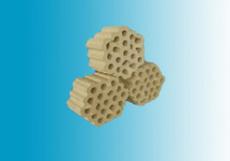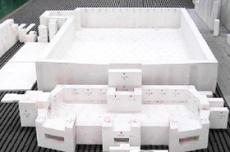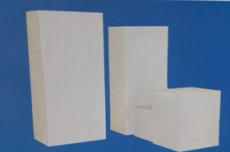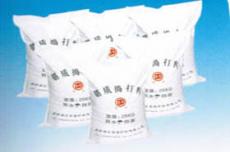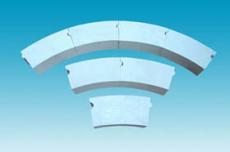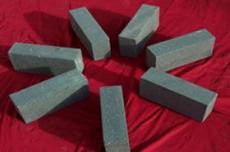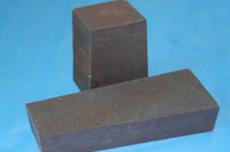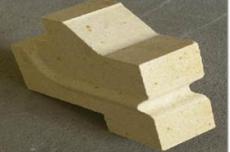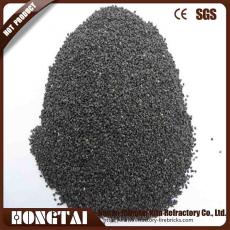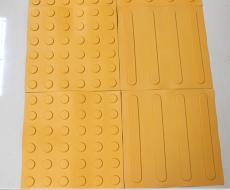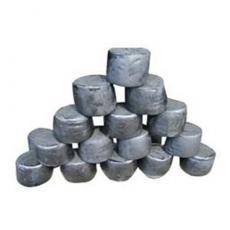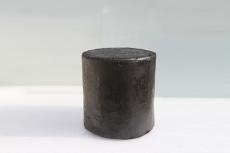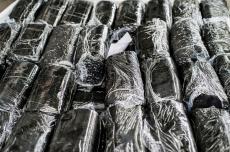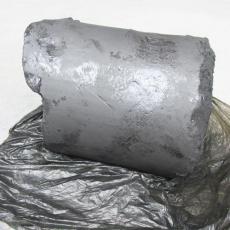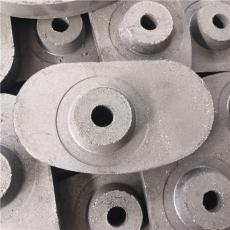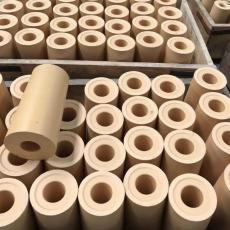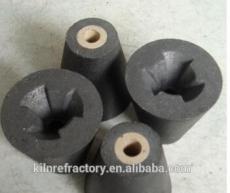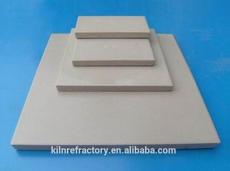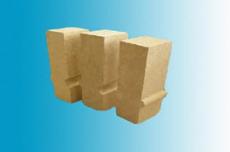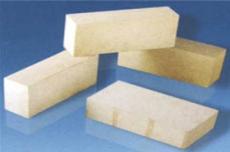
High-alumina bricks are refractories made of aluminum silicate with a mass fraction of more than 48% Al₂O₃. They are called high-alumina refractories due to the high content of aluminum oxide. They are classified into the following grades depending on the type of mineral:
Mullitosilicate bricks: Al₂O₃ content of 40–70%.
Mullitecorunda bricks: Al₂O₃ content of 79–95%.
Corundum raw materials: Al₂O₃ content of 95–100%.
They can also be classified according to their Al₂O₃ content, such as B. Class I: Al₂O₃ > 75%, Class II: Al₂O₃ 60–75%, Class III: Al₂O₃ 48–60%.
Ⅰ.Characteristics of High-Alumina Bricks
1. High refractoriness: Due to the high Al₂O₃ content, the refractoriness is generally 1750–1790 °C.
2. High softening temperature: Due to the low impurity content, the softening temperature under load is high. The high-temperature resistance of high-alumina bricks depends on the microstructure of the material. The heat resistance of the matrix part is much lower than that of the particles. During use, slag dissolves the matrix part first. Therefore, the high-temperature resistance of the material can be improved by optimizing and adjusting the matrix part and the structure of the material.
3 Excellent slag resistance: Alumina bricks contain a high Al₂O₃ content, close to that of neutral materials. As the Al₂O₃ content increases, the slag resistance of alumina bricks improves, but their alkali slag corrosion resistance is lower than that of alkali refractories. Reducing the impurity content helps to improve slag resistance. At the same time, increasing the density of the material and reducing porosity also help to improve slag resistance.
4 Excellent heat resistance:
Due to the low expansion coefficient of the brick, the heat resistance of alumina bricks is lower than that of clay bricks. This is closely related to the mineral composition of the material. Type I and Type II alumina bricks are inferior to Type III and other alumina bricks. During the production process, heat resistance is often increased by improving the properties of the granular structure of the material or by adding a certain amount of minerals such as synthetic cordierite (2MgO 2Al2O3 SiO2).
Ⅱ.Technical indicators of alumina brick
According to the physical and chemical indicators, alumina brick is divided into five grades: LZ-80, LZ-75, LZ-65, LZ-55 and LZ-48. In our country, LZ-48 alumina bricks are used in 6m coke ovens.
Ⅲ.Development of alumina bricks Our country has rich resources of raw materials for alumina bricks. In order to make the most of these resources, many refractory research and production institutes have focused on the development of alumina bricks in recent years. The performance of alumina bricks can be improved by adding other minerals and chemical components. In addition, the composition and high-temperature properties of the high-temperature crystalline phase in high-alumina bricks have been improved through synthesis and electric smelting processes, which has expanded the application areas of high-alumina bricks.
Ⅳ.Introduction to Various Special High Alumina Refractories
1. High alumina cordierite bricks are produced by adding a certain amount of synthetic cordierite (2MgO 2Al 5SiO) to the raw materials of high alumina materials. This results in high alumina materials with high heat resistance and excellent results.
2. Sillimanite and Andalusite Bricks: Sillimanite and andalusite are isomorphic and heterogeneous natural anhydrous aluminosilicate minerals with the molecular formula of Al SiO. These mineral raw materials undergo a phase change reaction during the heating process, resulting in the formation of mullite and a small amount of molten free SiO. Therefore, the refractories made from this raw material have high mullite mineral content, extremely low afterburning line changes, high softening point, high strength and excellent thermal stability, making them high-aluminum bricks with excellent performance.
Contact to inquiry and consulting:
WhatsApp me: Marina 008618838001797
